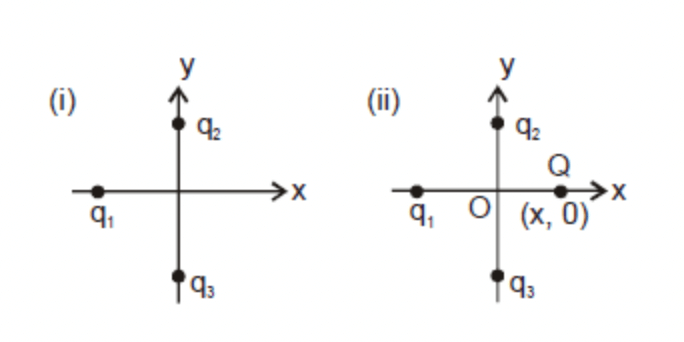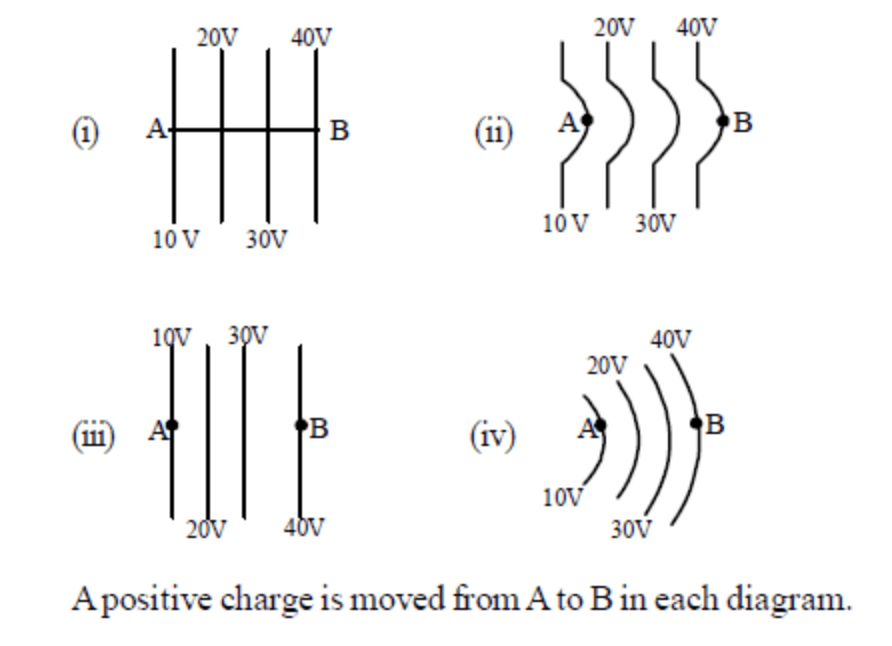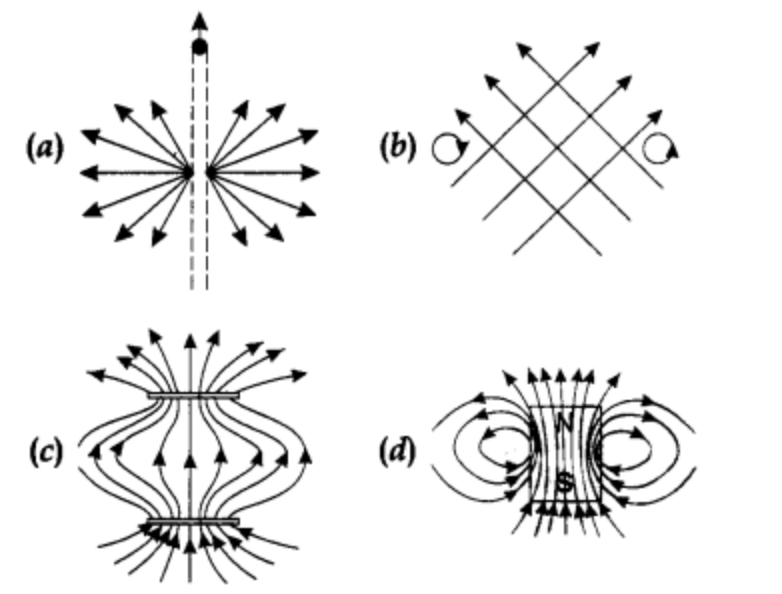Physics Class 12 MCQ Term 1
Physics Class 12 MCQ Term-1: As CBSE has begun with the Class 12 Term-1 Board Exam, and students are working hard to grab good marks in each subject. CBSE has included Term-1 & Term-2 where in Term-1 students have to attempt Multiple- Choice Questions (MCQs). Students must be revising 1000+ MCQs to sharpen their concepts for the chapters to be involved in Physics Class 12 Term-1 Exam. So if you want to revise Physics Class 12 MCQ just like the pattern of the exam, then you are at the right place. As we have provided important questions topic-wise for your ease.
Class 12 Physics Sample Paper for Term-1
To give an idea about the pattern of the Class 12 Physics Term-1 Board Exam, we have prepared a Class 12 Physics Sample Paper with its solutions in this section. We have covered important questions from each topic and you can practice these 50 questions just like you are attempting the real exam and analyze your preparation done so far. The Class 12 Physics Question Paper will consist of three sections. Section A has 25 questions out of which students have to attempt any 20 questions, Section B has 24 questions out of which students have to attempt 20 questions, and Section C has 6 questions out of which students have to attempt 5 questions.
Physics Class 12 Term-1 Answer Key for Today's Exam
CBSE Class 12 Physics MCQs for Term 1
Take a deep breath and not down the time before beginning with these MCQ and later on calculate how much time is consumed. These Physics Class 12 MCQs and sample question paper will also help you to understand which section you are weak at.
Q1. Which of the following statements is not true about Gauss’s law?
(a) Gauss’s law is true for any closed surface.
(b) The term q on the right side of Gauss’s law includes the sum of all charges enclosed by the surface.
(c) Gauss’s law is not much useful in calculating electrostatic field when the system has some symmetry.
(d) Gauss’s law is based on the inverse square dependence on distance contained in coulomb’s law
Answer- (c)
Q2. In figure two positive charges q2 & q3 fixed along the y-axis, exert a net electric force in the + x direction on a charge q1 fixed along x-axis. If a positive charge Q is added at (x,0), the force on q1..

(a) shall increase along the positive x-axis
(b) shall decrease along the positive x-axis
(c) shall point along the positive x-axis
(d) shall increase but the direction changes because of the interaction of Q with q2 and q3
Answer- (a)
Q3. Consider a region inside which, there are various types of charges but the total charge is zero. At points outside the region
(a) the electric field is necessarily zero.
(b) the electric field is due to the dipole moment of the charge distribution only.
(c) the dominant electric field is inversely proportional to r3, for large r (distance from origin).
(d) the work done to move a charged particle along a closed path, away from the region will not be zero.
Answer- (c)
Q4. A hemisphere is uniformly charged positively. The electric field at a point on a diameter away from the centre is directed..
(a) perpendicularly to the diameter
(b) parallel to the diameter
(c) at an angle tilted towards the diameter
(d) at an angle tilted away from the diameter
Answer- (a)
Q5. The quantisation of charge implies
(a) charge can't be destroyed
(b) charge exists on particles
(c) there is a minimum permissible charge on a particle
(d) charge, which is a fraction of coulomb on a particle
Answer- (d)
Q6. The unit of electric dipole moment is
(a) newton
(b) coulomb
(c) farad
(d) debye
Answer- (d)
Q7. Charge is the property associated with the matter due to which it produces and experiences
(a) electric effects only
(b) magnetic effects only
(c) both electric and magnetic effects
(d) None of these
Answer- (c)
Q8. An electric dipole of moment 𝑝⃗ is placed in a uniform electric field 𝐸⃗ . Then
(i) the torque on the dipole is 𝑝⃗ ×E→
(ii) the potential energy of the system is 𝑝⃗ .E→
(iii) the resultant force on the dipole is zero. Choose the correct option.
(a) (i), (ii) and (iii) are correct
(b) (i) and (iii) are correct and (ii) is wrong
(c) only (i) is correct
(d) (i) and (ii) are correct and (iii) is wrong
Answer- (b)
Q9. In a parallel plate capacitor, the capacity increases if
(a) area of the plate is decreased.
(b) distance between the plates increases.
(c) area of the plate is increased.
(d) dielectric constantly decreases.
Answer- (c)
Q10. A parallel plate air capacitor is charged to a potential difference of V volts. After disconnecting the charging battery the distance between the plates of the capacitor is increased using an insulating handle. As a result the potential difference between the plates
(a) increases
(b) decreases
(c) does not change
(d) becomes zero
Answer- (a)
Q11. Two spherical conductors each of capacity C are charged to potential V and -V. These are then connected by means of a fine wire. The loss of energy is
(a) zero
(b) ½ CV²
(c) CV²
(d) 2 CV²
Answer- (c)
Q12. Two identical capacitors are joined in parallel, charged to a potential V, separated and then connected in series, the positive plate of one is connected to the negative of the other. Which of the following is true?
(a) The charges on the free plated connected together are destroyed.
(b) The energy stored in this system increases.
(c) The potential difference between the free plates is 2V.
(d) The potential difference remains constant.
Answer- (c)
Q13. In a region, potential is represented by V(x,y,z)= 6x - 8xy - 8y + 6yz, where V is in volts and x,y,z are in metres. The electric force experienced by a charge of 2 coulomb situated at the point (1,1,1) is-
(a) 6√5 N
(b) 30 N
(c) 24 N
(d) 4√35 N
Answer- (d)
Q14. The diagram below shows regions of equipotentials

(a) In all four cases the work done is the same
(b) Minimum work is required to move q in figure (i)
(c) Maximum work is required to move q in figure (ii)
(d) Maximum work is required to move q in figure (iii)
Answer- (a)
Q15. The positive terminal of 12 V battery is connected to the ground. Then the negative terminal will be at-
(a) - 6 V
(b) +12 V
(c) Zero
(d) -12 V
Answer- (d)
Q16. Combine three resistors 5 Q, 4.5 Q and 3 Q in such a way that the total resistance of this combination is maximum
(a) 12.5 Q
(b) 13.5 Q
(c) 14.5 Q
(d) 16.5 Q
Answer- (a)
Q17. In a potentiometer of 10 wires, the balance point is obtained on the 7th wire. To shift the balance point to 9th wire, we should
(a) decrease resistance in the main circuit.
(b) increase resistance in the main circuit.
(c) decrease resistance in series with the cell whose emf is to be measured.
(d) increase resistance in series with the cell whose emf is to be determined.
Answer- (d)
Q18. AB is a wire of potentiometer with the increase in the value of resistance R, the shift in the balance point J will be

(a) towards B
(b) towards A
(c) remains constant
(d) first towards B then back towards A
Answer- (a)
Q19. A charge is moving across a junction, then
(a) momentum will be conserved.
(b) momentum will not be conserved.
(c) at some places, momenturii will be conserved and at some other places, momentum will not be conserved.
(d) none of these.
Answer- (d)
Q20. In a Wheatstone bridge if the battery and galvanometer are interchanged then the deflection in the galvanometer will
(a) change in the previous direction
(b) not change
(c) change in the opposite direction
(d) none of these.
Answer- (b)
Q21. The cold junction of the thermocouple is maintained at 10°C. No thermo e.m.f. is developed when the hot junction is maintained at 530°C. The neutral temperature is
(a) 260°C
(b) 265°C
(c) 370°C
(d) 520°C
Answer- (c)
Q22. In a large building, there are 15 bulbs of 40W, 5 bulbs of 100W, 5 fans of 80 W and 1 heater of 1kW. The voltage of electric mains is 220V. The minimum capacity of the main fuse of the building will be-
(a) 8 A
(b) 10 A
(c) 12 A
(d) 14 A
Answer- (c)
Q23. A potentiometer wire is 100 cm long and a constant potential difference is maintained across it. Two cells are connected in series to support one another and then in opposite directions. The balance points are obtained at 50 cm and 10 cm from the positive end of the wire in two cases. The ratio of emf's is
(a) 5:1
(b) 5:4
(c) 3:4
(d) 3:2
Answer- (d)
Q24. The nature of parallel and anti-parallel currents are
(a) parallel currents repel and antiparallel currents attract.
(b) parallel currents attract and antiparallel currents repel.
(c) both currents attract.
(d) both currents repel.
Answer- (b)
Q25. A current-carrying loop is placed in a uniform magnetic field. The torque acting on it does not depend upon
(a) area of loop
(b) value of current
(c) magnetic field
(d) None of these
Answer- (d)
Q26. When a magnetic compass needle is carried nearby to a straight wire carrying current, then
(I) the straight wire causes a noticeable deflection in the compass needle.
(II) the alignment of the needle is tangential to an imaginary circle with a straight wire as its centre and has a plane perpendicular to the wire
(a) (I) is correct
(b) (II) is correct
(c) both (I) and (II) are correct
(d) neither (I) nor (II) is correct
Answer- (c)
Q27. In an inertial frame of reference, the magnetic force on a moving charged particle is 𝐹⃗ Its value in another inertial frame of reference will be
(a) remained same
(b) changed due to a change in the amount of charge
(c) changed due to change in velocity of charged particle
(d) changed due to change in field direction
Answer- (c)
Q28. Two a-particles have the ratio of their velocities as 3 : 2 on entering the field. If they move in different circular paths, then the ratio of the radii of their paths is
(a) 2 : 3
(b) 3 : 2
(c) 9 : 4
(d) 4 : 9
Answer- (b)
Q29. Which of the following independent quantities is not used to specify the earth’s magnetic field?
(a) Magnetic declination (θ).
(b) Magnetic dip (δ).
(c) Horizontal component of earth’s field (BH).
(d) Vertical component of earth’s field (BV).
Answer (d)
Q30. Which of the following is correct about magnetic monopole?
(a) Magnetic monopole exists.
(b) Magnetic monopole does not exist.
(c) Magnetic monopoles have a constant value of monopole momentum.
(d) The monopole momentum increase due to an increase in its distance from the field.
Answer (b)
Q31. Which of the following is not showing the essential difference between electrostatic shielding by a conducting shell and magnetostatic shielding?
(a) Electrostatic field lines can end on charges and conductors have free charges.
(b) Magnetic field lines can end but conductors cannot end them.
(c) Lines of the magnetic field cannot end on any material and perfect shielding is not possible.
(d) Shells of high permeability materials can be used to divert lines of the magnetic field from the interior region.
Answer- (b)
Q32. Point out the correct direction of the magnetic field in the given figures.

Answer- (d)
Q33. The strength of the earth’s magnetic field is
(a) constant everywhere.
(b) zero everywhere.
(c) having very high value.
(d) vary from place to place on the earth's surface.
Answer- (d)
Q34. The earth behaves as a magnet with a magnetic field pointing approximately from the geographic
(a) North to South
(b) South to North
(c) East to West
(d) West to East
Answer- (b)
Q35. Let the magnetic field on earth be modelled by that of a point magnetic dipole at the centre of earth. The angle of dip at a point on the geographical equator is
(a) always zero
(b) positive, negative or zero
(c) unbounded
(d) always negative
answer- (b)
Q36. The angle of dip at a certain place where the horizontal and vertical components of the earth’s magnetic field are equal is
(a) 30°
(b) 75°
(c) 60°
(d) 45°
Answer- (d)
Q37. The vertical component of the earth’s magnetic field. at a place is √3 times the horizontal component the value of the angle of dip at this place is
(a) 30°
(b) 45°
(c) 60°
(d) 90°
Answer- (c)
Q38. The north pole of a long bar magnet was pushed slowly into a short solenoid connected to a short galvanometer. The magnet was held stationary for a few seconds with the north pole in the middle of the solenoid and then withdrawn rapidly. The maximum deflection of the galvanometer was observed when the magnet was
(a) moving towards the solenoid
(b) moving into the solenoid
(c) at rest inside the solenoid
(d) moving out of the solenoid
Answer- (d)
Q39. Two identical coaxial coils P and Q carrying an equal amount of current in the same direction are brought nearer. The current in
(a) P increases while in Q decreases
(b) Q increases while P decreases
(c) both P and Q increases
(d) both P and Q decreases
Answer- (d)
Q40. A solenoid is connected to a battery so that a steady current flows through it. If an iron core is inserted into the solenoid, the current will
(a) increase
(b) decrease
(c) remain same
(d) first increase then decrease
Answer- (b)
Q41. Magnetic moment for solenoid and corresponding bar magnet is
(a) equal for both
(b) more for solenoid
(c) more for bar magnet
(d) none of these
Answer- (a)
Q42. In the case of an inductor
(a) voltage lags the current by π/2
(b) voltage leads the current by π/2
(c) voltage leads the current by π/3
(d) voltage leads the current by π/4
Answer- (b)
Q43. In a pure capacitive circuit if the frequency of ac source is doubled, then its capacitive reactance will be
(a) remains same
(b) doubled
(c) halved
(d) zero
Answer- (c)
Q44. In an alternating current circuit consisting of elements in series, the current increases on increasing the frequency of supply. Which of the following elements are likely to constitute the circuit?
(a) Only resistor
(b) Resistor and inductor
(c) Resistor and capacitor
(d) Only inductor
Answer- (c)
Q45. In which of the following circuits the maximum power dissipation is observed?
(a) Pure capacitive circuit
(b) Pure inductive circuit
(c) Pure resistive circuit
(d) None of these
Answer- (c)
Q46. In a series LCR circuit the voltage across an inductor, capacitor and resistor are 20 V, 20 V and 40 V respectively. The phase difference between the applied voltage and the current in the circuit is
(a) 30°
(b) 45°
(c) 60°
(d) 0°
Answer- (d)
Q47. At resonant frequency the current amplitude in series LCR circuit is
(a) maximum
(b) minimum
(c) zero
(d) infinity
Answer- (a)
Q48. Quality factor and power factor both have the dimensions of
(a) time
(b) frequency
(c) work
(d) angle
Answer- (d)
Q49. For an ideal-step-down transformer, the quantity which is constant for both the coils is
(a) current in the coils
(b) the voltage across the coils
(c) resistance of coils
(d) power in the coils
Answer- (d)
Q50. A transformer works on the principle of
(a) self-induction
(b) electrical inertia
(c) mutual induction
(d) magnetic effect of the electrical current
Answer- (c)
Class 12 Physics MCQ & Sample Paper for Term-1
There are 7 units to be covered in Class 12 Physics Term-1 Exam including Electric Charges and Fields, Electrostatic Potential and Capacitance, Current Electricity, Moving Charges and Magnetism, Magnetism and Matter, Electromagnetic Induction, and Alternating Current as per Class 12 Physics Syllabus released by CBSE. Click on the below link and download Physics Class 12 MCQ Term-1 Sample Papers and practice with these questions to strengthen your preparation.
Click to Download Class 12 Physics Sample Paper 2021 PDF
Click to Download Class 12 Physics Sample Paper 2021 Solution PDF
CBSE Class 12 Physics Syllabus (Term 1+Term 2)- Click Here
CBSE Class 12 Chemistry Syllabus (Term 1+Term 2)- Click Here
